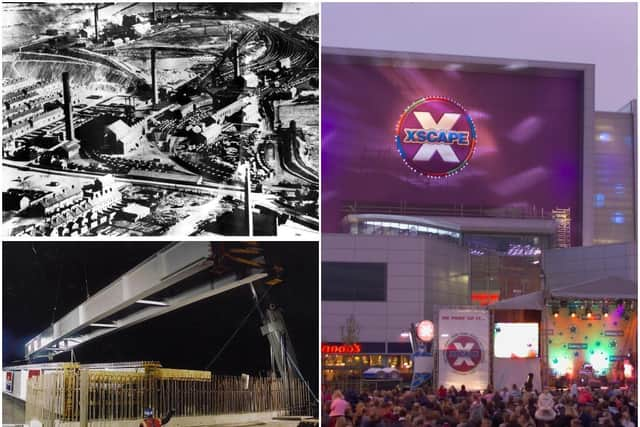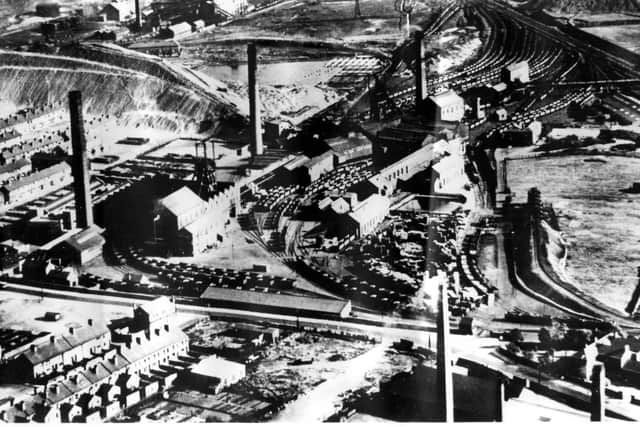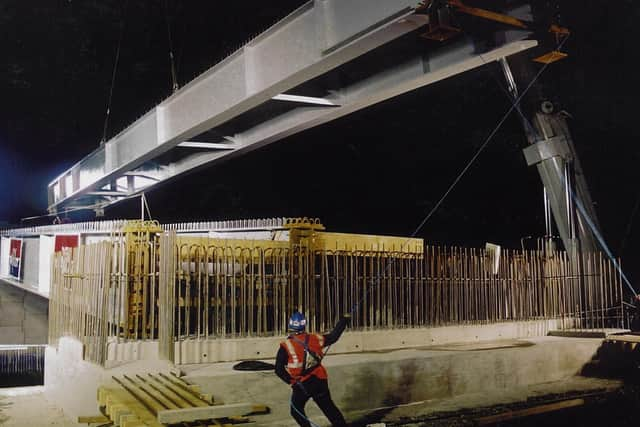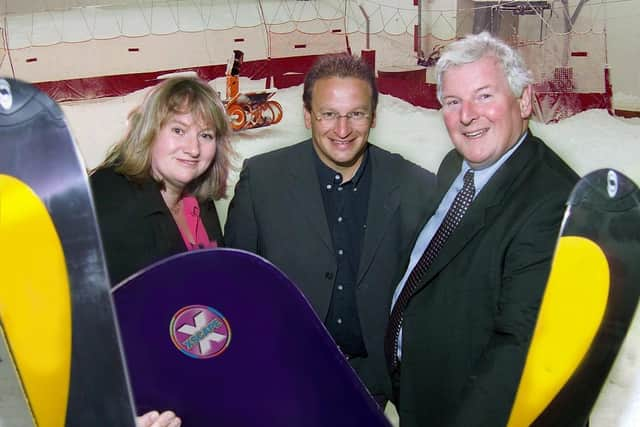Developers celebrate 24 years of work at former Glasshoughton Colliery
and live on Freeview channel 276
The colliery closed in 1986 after 117 years as the lifeblood of the community – but it was 10 years before a workable scheme for decontaminating and developing the site was formulated, allowing Waystone to start work in the closing months of 1996.
The ambitious plan was centred around an indoor ski slope (nicknamed the Snow Dome) and no doubt many were somewhat sceptical about the likelihood of skiing in Castleford – probably with more than a little justification!
Advertisement
Hide AdAdvertisement
Hide AdThe plans also included new housing, a retail outlet, hotel, railway station and land for industrial and business uses, all of which would provide many of the new jobs the community so badly needed.


The first employment was provided by the initial two-year remediation and reclamation scheme. Many of the plant operators were former Glasshoughton miners, whose knowledge of the locations of shafts, lagoons and other buried features was invaluable, and often more complete than the old colliery plans.
The remediation task was a huge engineering feat in itself, easily forgotten now, as the site became a hive of activity with more than 50 excavators, bulldozers, trucks, scrapers, rollers and concrete breakers roving across the site for 12 hours a day.
The fuel for all this machinery was stored in a big blue elevated tank opposite Asda on Leeds Road which became a local landmark, only being removed in 2007.
Advertisement
Hide AdAdvertisement
Hide AdThe excavations to remove contamination from the old coking works led to the opencast mining of two coal seams – the Houghton Thin and the Houghton Muck – from the area now occupied by Xscape and Junction 32.


Together with a further small operation in the area now occupied by the ponds beyond Motorpoint, this would be the last coal ever to leave the gates of Glasshoughton Colliery.
Uncovering these seams revealed a labyrinth of old workings, frighteningly narrow, dating from centuries past – possibly the first ever generation of Glasshoughton miners!
The symbolic transition from the old to the new was marked by placing a time capsule as one of the old shafts was capped in an event for dignitaries and community leaders which was covered by Yorkshire TV.
Advertisement
Hide AdAdvertisement
Hide AdWho knows, if Colorado Way is excavated in a hundred years’ time someone may find a steel cylinder cast into the top of the mineshaft cap containing a 1997 copy of the Express and other memorabilia.


At the outset of the project the Glasshoughton Community Forum was formed, chaired by Tony Cairns and bringing together members of the community, local councillors, school leaders and Waystone to exchange ideas and ensure the community could contribute to the development.
The forum has evolved over the years but still has at its core many of the original characters and is still chaired by Tony.
Many other stalwart members of the community helped to nurture the success of the new Glasshoughton. The late Hilda Burton was a vocal character who did her very best for the future of her beloved Glasshoughton (and the Glasshoughton juniors football team), while Winnie McLoughlin, John Richmond, Betty Vessey, Christine Fender, Denise Page, Paul Phelps and others were longstanding forum members, together with councillors Denise Jeffery, Tony Wallis, Mark Burns-Williamson and Richard Forster.
Advertisement
Hide AdAdvertisement
Hide AdMP Yvette Cooper was elected to represent Castleford shortly after works started and later cut the turf to start construction on the new Wakefield College Skills Xchange building, before opening the new facility together with husband Ed Balls in 2009.


Other community events included open days when hundreds of people took Land Rover tours of the works and local primary schools made educational visits. Some of those children later became students at the award-winning Skills Xchange campus on the same spot they first visited while at primary school.
The first development to open was the retail outlet in autumn 1999, originally known as Freeport and since renamed Junction 32. This was followed by the new housing estate, before Xscape opened in 2003 – after which the development floodgates were open. Except for a lull due to the credit crunch, building at Glasshoughton has progressed almost continuously ever since, and the final buildings on Thunderhead Ridge are now under construction.
The success of the early development led to Waystone extending the project to the opposite side of the railway line, requiring a new bridge on what is now Whistler Drive.
Advertisement
Hide AdAdvertisement
Hide AdRe-engineering the old settlement lagoons alongside the M62 created more employment land, which is now occupied by WDH, Teva, Really Useful Box Company and others. The number of new jobs at Glasshoughton now exceeds 4,000.
Glasshoughton’s best-known landmark beyond Xscape and the iconic Skills Xchange building is undoubtedly the Wheel of Light roundabout.
Unveiled in 2005 by former mayoress Winnie McLoughlin as a memorial to the miners of Glasshoughton, it features one of the former pithead wheels suspended by cables above the centre of the busy roundabout, taking the tradition of colliery memorials to new levels.


In addition to all the building, the plans also included green open spaces, woodland and heathland on the old colliery spoil tips. The tips were regraded, sealed and topsoiled before thousands of young trees were planted, most of which have now been established for 20 years and are naturally regenerating.
Advertisement
Hide AdAdvertisement
Hide AdPonds and watercourses were created to manage the surface water runoff and to provide new habitats, all of which were established under the direction of ecologists. Herons, kingfishers, buzzards, kestrels and many other species are now common sights on the former tips where, in 1995, there wasn’t so much as a blade of grass to be seen.
Access to the public was improved with the opening of a network of new bridleways in the summer of 2019.
Glasshoughton has changed immeasurably during the past two decades. The redevelopment of the colliery has been more extensive and varied than originally envisaged, much new housing has been built beyond the colliery boundaries and an ever-increasing proportion of the present community would not have known Glasshoughton as a working pit.
The changes may not be perfect – Xscape doesn’t resemble the transparent glass Snow Dome depicted by Waystone’s architect in the original vision and there still isn’t a new Castleford Tigers stadium – but few would go back to the 335 acres of ‘blue billy’ polluted wasteland of 1995.
For more information and photos of the development at the Glasshoughton site, pick up a copy of this week's Pontefract and Castleford Express.